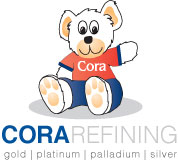 For today’s dental practice, the value locked away in old crowns, bridges, inlays, and other gold-bearing dental materials often goes unrecognized. Yet, with the price of gold consistently strong, working with a reputable dental scrap refiner offers an opportunity to recover substantial returns for your office while practicing responsible materials management. This guide explores how dentists and oral surgeons can identify, collect, and maximize the payout from their dental gold scrap and unlock a largely overlooked asset. We’ll also show why choosing the right refiner beats using generic gold buyers when you want to sell your dental gold.
For today’s dental practice, the value locked away in old crowns, bridges, inlays, and other gold-bearing dental materials often goes unrecognized. Yet, with the price of gold consistently strong, working with a reputable dental scrap refiner offers an opportunity to recover substantial returns for your office while practicing responsible materials management. This guide explores how dentists and oral surgeons can identify, collect, and maximize the payout from their dental gold scrap and unlock a largely overlooked asset. We’ll also show why choosing the right refiner beats using generic gold buyers when you want to sell your dental gold.
Why Dental Gold Scrap Matters
Despite advances in restorative materials, gold remains valued for its durability, biocompatibility, and longevity. Crowns, bridges, inlays, posts, and onlays removed during extractions or upgrades accumulate quickly — each containing potentially significant precious metal content. Many practices underestimate just how much these fragments add up, both in weight and in dollar value.

Understanding Dental Gold Value
Not all dental gold is created equal. Dental alloys are typically a mix of gold with other metals, resulting in purity levels ranging from as low as 10% to as high as 92% gold content.
To get an approximate value of your dental scrap, you can use this simple formula:
Gold Scrap Value = [Weight] × [Purity] × [Current Gold Price]
For example, a 0.07 oz crown with 66.7% gold purity and a gold spot price of $3343.30 per ounce would be valued as follows:
0.07 ounces × 0.667 × $3343.30/oz = $156.09
For higher-purity alloys, the value would increase. Most typical dental gold crowns and bridges range from 16 – 20 karats, meaning the gold content is substantial but varies.
Most dental scrap is not labeled or marked with the percentage purity. To find that out, use a trusted dental scrap refiner. A reputable refiner will melt and assay your dental scrap to determine its precise content, ensuring no money is left on the table compared to cash buyers who estimate based on weight alone and usually offer a lower rate.
The Pitfall of Middlemen: Why Direct Refining Pays More
Cash buyers and pawn shops commonly offer as little as 20–40% of gold value for dental scrap, often performing rudimentary tests or just weighing the material. They frequently overlook other valuable metals present (such as platinum, palladium, or silver), and their pricing does not reflect the true worth of the alloy mix.
Refiners, by contrast, conduct detailed laboratory assays on homogenous material (after melting and mixing your batch), which leads to far more accurate payouts. Top dental scrap refiners routinely pay significantly higher amounts than generic buyers. Waiting an extra few days for assay-based payment is well worth it for the higher returns.
Collection Strategies for Your Practice
To best capture value from dental gold scrap:
- Educate your entire dental team about saving all removed gold-containing work, regardless of condition.
- Use labeled envelopes or secure containers in every operatory for immediate storage.
- Keep a written log detailing the source, date, and type of each gold scrap item.
- Partner with a dental scrap refiner that supplies secure containers, prepaid shipping, and provides detailed assay results upon receipt of your lot.
For offices performing a high volume of removals, set a schedule to ship gold scrap monthly, quarterly, or twice per year. By batching shipments, you ensure enough material for accurate testing and maximized efficiency.
Beyond Gold: Other Recoverable Precious Metals
Crowns and bridges may contain not only gold but also platinum, palladium, and silver —metals that contribute additional value to your compensation. Specialty dental scrap refiners assay for these metals and include their value in your payout, unlike generic buyers who focus solely on gold content. This is particularly important for porcelain-fused-to-metal crowns and white alloys, which often contain precious metals not immediately visible.

Case Comparison: Direct Refiner vs. Local Cash Buyer
Consider two dental practices: both collect a year’s worth of gold scrap weighing 1 ounce at 75% purity.
- Local Cash Buyer (pays 40% of value): 1 oz × 0.75 × $3343.30 = $2,507.48 → 40% payout = $1,002.99
- Dental Scrap Refiner (pays 80% of value): 1 oz × 0.75 × $3343.30 = $2,507.48 → 80% payout = $2,005.98
By simply shipping to a reputable dental scrap refiner, the second office receives almost double the return for the same material — proving the critical importance of working directly with dental scrap refiners that test the materials you send.
How to Choose the Right Refiner
When selecting a dental scrap refiner, look for:
- Transparent, detailed reporting of weight and payout calculation
- Assay-based valuation, not just visual or acid tests
- Fast payments
Some refiners, including Cora Refining, are known for personal service, supplying secure refining kits, and free insured shipping — making the entire process secure, traceable, and convenient.
Make Dental Gold Part of Your Practice’s Value Stream
Gold crowns, bridges, and dental scrap are often small in size but large in value, especially when you take control of the refining process. By establishing clear collection protocols and partnering with a leading dental scrap refiner, your practice can reliably maximize returns.
Don’t lose value to intermediaries. Insist on scientific, direct-payout refining and make dental scrap refining a regular part of your practice’s vocabulary — because every ounce counts when you want to maximize returns.
